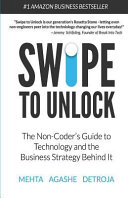

The book emphasizes how technology fundamentally alters human interactions, economies, and cultures. It explains that technology is not merely a tool but a powerful force that shapes our lives and societal structures. The authors illustrate this with examples of how social media platforms have transformed communication, creating both opportunities for connection and challenges such as misinformation and polarization. The discussion includes how technology influences industries, labor markets, and even personal relationships, highlighting the importance of being aware of these changes as we navigate the digital age.
Continue readingUser-centric design is a core principle discussed in the book, stressing that technology should prioritize the needs and experiences of users. The authors delve into design thinking and how successful products often stem from a deep understanding of user behavior and preferences. They provide case studies of companies that excel in user experience, illustrating how thoughtful design can lead to higher customer satisfaction and loyalty. This idea encourages readers, especially product developers and designers, to adopt a user-first approach in their work.
Continue readingData is portrayed as the lifeblood of modern technology. The book explains how data collection, analysis, and utilization drive innovation and efficiency across various sectors. The authors discuss the significance of big data, machine learning, and artificial intelligence in creating smarter products and services. They also touch on ethical considerations surrounding data privacy and security, urging readers to consider the implications of data usage in their own projects and businesses. This insight is crucial for anyone involved in tech development or data-driven decision-making.
Continue readingThe book explores how technology has revolutionized traditional business models, leading to the emergence of new paradigms such as subscription services, platform economies, and the gig economy. The authors analyze successful companies that have adapted to these changes and highlight the importance of agility and innovation in business strategy. They argue that understanding these evolving models is essential for entrepreneurs and business leaders to remain competitive in a rapidly changing market landscape.
Continue readingThe future of work is a significant theme in the book, where the authors discuss how technology is reshaping employment, skills, and workplace dynamics. They address the rise of remote work, automation, and the need for continuous learning and adaptability in the workforce. The book emphasizes that as technology evolves, so too must our approach to career development and professional growth. This idea is particularly relevant for individuals navigating their careers in an increasingly digital and automated world.
Continue readingInnovation is framed as a critical driver of success in the tech industry. The authors argue that fostering a culture of innovation within organizations can lead to groundbreaking products and services. They provide insights into the entrepreneurial mindset, encouraging readers to embrace risk-taking and creativity. The discussion includes tips for aspiring entrepreneurs on how to identify market opportunities and leverage technology to bring their ideas to fruition. This idea serves as an inspiration for anyone looking to start their own venture or innovate within an existing organization.
Continue readingThe book concludes with a discussion on the ethical responsibilities of technologists and entrepreneurs. The authors stress that with great power comes great responsibility, urging readers to consider the societal implications of their technological innovations. They advocate for ethical decision-making in tech development, emphasizing the need for transparency, accountability, and a focus on positive societal impact. This idea serves as a call to action for readers to engage with technology thoughtfully and responsibly.
Continue reading